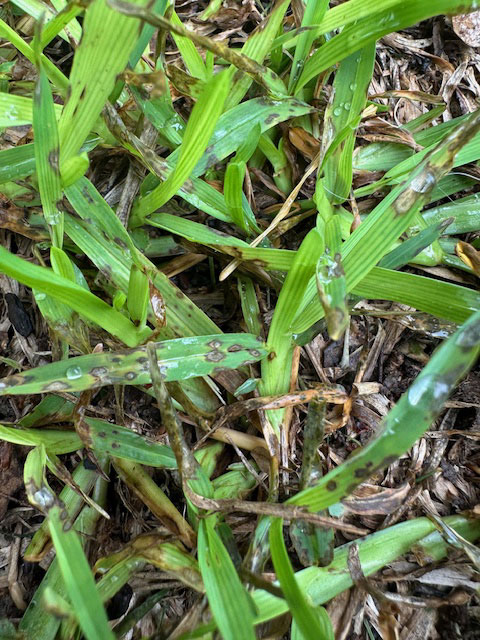Lawn Disease Guide for Burleson, TX — By Agronomist Aaron Shehan
If your St. Augustine lawn in Burleson is turning yellow or thinning out from May through the summer, there’s a good chance you’re seeing Gray Leaf Spot—a common fungal disease we treat every year across neighborhoods like Southern Oaks, Oak Valley Estates, Mountain Valley, and Castle Hills.
🎯 What Causes Gray Leaf Spot?
Gray Leaf Spot is caused by the fungus Pyricularia grisea and thrives in hot, humid, and damp conditions—exactly what we get from late spring through early fall in Burleson.
It typically shows up when:
- Watering starts too early (March–April)
- Surface stays moist from over-irrigation, poor drainage, or shaded zones
- Fast-growing turf is pushed with excess nitrogen
- Temps rise and humidity kicks in (starting around May)
💧 Frequent surface moisture is the biggest trigger. Add in warm nights and you’ve got the perfect storm for disease.
🌿 Fertilizer and Fungicide Strategy
We use fast-release nitrogen in spring but keep it under ½ lb per 1,000 sq ft, which is safe for St. Augustine. Most of the year, we use slow-release granulars like 12-0-6 to support steady growth without pushing excess leaf tissue that invites disease.
Starting February 15, our liquid treatments include fungicides to help manage:
- Gray Leaf Spot (late spring and summer)
- Brown Patch (primarily a fall issue)
Fungicide Protocol:
- When temps are over 85°F, we apply azoxystrobin alone
- When temps are below 85°F, we combine azoxystrobin and propiconazole for broader protection
Fungicides help—but if your watering isn’t dialed in, even the best products won’t keep it from coming back.
🕵️ How to Identify Gray Leaf Spot
What I look for in Burleson lawns:
- Yellow or bleached patches that spread quickly
- Blades with gray or tan spots bordered by a darker margin
- Turf that looks scorched or wilted, even when wet
- Early signs often appear in thin or shaded areas
A common mistake is to water more, thinking the lawn is dry—which makes the disease worse.
🛠️ Full-Lawn Treatment Is Key
Here’s the protocol I recommend:
- Turn off irrigation unless temps are consistently above 90°F
- Avoid excess nitrogen unless part of a balanced, slow-release blend
- Mow properly to improve airflow—don’t mow too tall
- Treat the entire lawn, not just isolated areas
Spot treating doesn’t work.
Mowers and tools easily spread fungal spores. If you treat, treat the whole lawn so you’re not chasing symptoms week after week.
✅ How to Prevent Gray Leaf Spot
- Only water when temps are above 90°F and the soil is dry
- Use ½ lb of nitrogen or less per 1,000 sq ft, ideally slow-release
- Mow at a moderate height to improve airflow
- Avoid watering at night, especially in shaded areas
Final Thoughts
Gray Leaf Spot is a sign your lawn needs a reset. Watering too early or pushing growth too hard creates the perfect storm for disease. Fungicides help, but cultural practices fix the problem long-term.
At Burleson Lawn Care, we treat the cause, not just the symptoms—because that’s what keeps your lawn looking better than your neighbor’s.
📞 Need help diagnosing or treating a sick lawn?
Call 1-800-LAWNCARE or visit BurlesonLawnCare.com and schedule a visit today.


